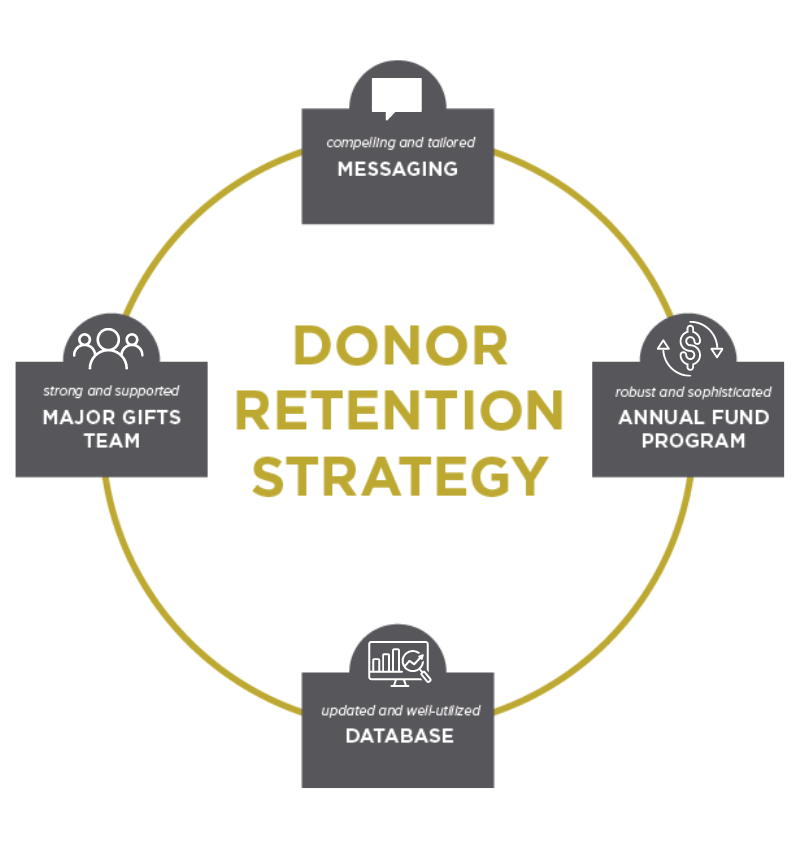As a result of COVID-19, many institutional and individual donors increased their giving, sought out new organizations to support, engaged with grantees in new ways and made less restrictive gifts. But will that still be the case post-pandemic? Has the ways in which philanthropists give been permanently changed, or will things revert to the way they once were? We recently spoke with a number of donors about these questions and more.
Institutional Donor Insights and Trends
Institutional donors gave more and in unprecedented ways as a result of the pandemic. In the first half of 2020 alone, corporations accounted for nearly 2/3 of the $11.9 billion given for COVID-19 globally (source), and hundreds of leading foundations signed a pledge to “loosen or eliminate the restrictions on current grants” and “make new grants as unrestricted as possible” (source). Philip Li, President of the Robert Sterling Clark Foundation (RSCF) in New York City said that at the start of the pandemic, the Foundation quickly decided to extend grant funding to all 2020 recipients by an additional year. In fact, the Foundation included its 2019 grantees in the funding expansion as well. Later in the year, RSCF gave an additional $20K unrestricted to each grantee.
Melissa MacDonnell, President of the Liberty Mutual Foundation in Boston, shared how the Foundation similarly doubled down: “Last March, our Foundation Board voted in an extra $10M on top of the $5M in grants we had already designated for COVID. We also loosened restrictions on $14.4M in program grants for operating costs. Within a couple months of the onset of the pandemic, we had made nearly 350 grants for a wide range of purposes—cleaning supplies, chrome books, emergency staff, etc.” Over the next few months, LMF continued its giving, issuing grants (without proposals) in multiple rounds: the first to organizations focused on healthcare, shelter, and food access; the second to community health centers; and the third to organizations providing low-income elder housing, meeting immigrant needs, and again, providing food access. “While tons had changed, some things hadn’t. We were prioritizing organizations that were helping people experiencing tremendous vulnerability. The leaders of these organizations had a profound sense of purpose. We saw their pure heroism, really – and that moved us,” Melissa reflected.
Not only did foundations give more, they found new ways to support and engage their grantees. Philip shared that RSCF “created an Executive Director Circle, so that EDs could meet virtually with peers to discuss the challenges they were all facing—e.g., layoffs, furloughs, PPP—and how to handle them. [At the organizations they led], the executive directors felt they had to be the strong ones and have all the answers. With each other, they didn’t. We also hired an external facilitator so the executive directors had a safe place to openly discuss sensitive issues, such as racial awakening, organizational shortfalls, etc., that could feel uncomfortable to discuss in front of a funder.” This is an approach the foundation plans to continue post-COVID – as well as expand. Philip said, “[We will] keep these gatherings going in 2021, and we’re looking to develop something similar for new and first-time executive directors – their own version of a community. We have also created a resources bank in response to the reality that many of these organizations do not have access to the HR expertise, legal counsel, financial planning, etc., that they need. So, we paid for these resources and have contracted with organizations to provide courses on virtual management, as well.”
At Liberty Mutual Foundation, Melissa found that COVID not only provided an opportunity to engage grantees in new and meaningful ways, but an opportunity to do the same with Liberty Mutual employees: “During COVID, we leaned into our Liberty Torchbearers program, which is our employee volunteer program. Of course, we could no longer volunteer in person, but we were able to offer virtual volunteer opportunities. We had thousands of employees volunteer their time to call people who were isolated due to COVID. Staff were also able to have their family and friends volunteer with them, which they really loved and appreciated, and we will continue to offer moving forward.”
Both Philip and Melissa agreed that COVID has reinforced their foundations’ philanthropic philosophy and commitment. “Our focus has long been on trust-based philanthropy, and COVID has affirmed this,” said Philip. “The experience has shown the importance of providing support that goes beyond the check. This is something we have been doing and will continue to do.” Melissa shared Philip’s sentiments: “Throughout the pandemic, we leaned into executing on trust, and we were reminded of the importance of long-term relationships. Because we invest in deep relationships with our partners, we trust them – it allowed us to be as responsive as we were.” One thing will change going forward: “I think we learned to work more collaboratively with the city and other funders during COVID,” Melissa said. “We built a muscle in the philanthropic community that I hope we can continue to strengthen.”
Individual Donor Insights and Trends
Likewise, the COVID-19 pandemic spurred many individual donors to increase their donations. Fidelity Charitable’s clients donated $9.06M in donor-recommended grants in 2020, a 24% increase from the previous year (source), and according to a survey of 500 donors the company conducted last August, 46% reported donating more in 2020 than in 2019 due to the pandemic (source). And not only did donors give larger amounts, they did so with fewer restrictions. Nancy and Ed Roberts, long-term major supporters of the arts and higher education institutions in Boston, donated to the Museum of Fine Arts in 2020—as they have done in many previous years—but for the first time, they chose not to specify the gift’s purpose: “We didn’t give for a specific programmatic activity, but for general funding because that’s what the museum needed,” Ed said. “This is something we had not done before, and [if you had asked me pre-COVID], I would have said it wasn’t something we would have done. That changed in the presence of COVID.”
Individual donors also sought out organizations on the frontlines of battling the pandemic’s impact. Fidelity Charitable reported donors to organizations focused on food aid, medical needs, and racial equity each grew by thousands of percentage points (source). Nancy and Ed chose to deepen their support of The Greater Boston Food Bank and Beth Israel Deaconess, while also seeking out other organizations that hadn’t been as high on their radar previously: “This year expanded our view of the organizations that need our support.”
Moving forward, Nancy and Ed anticipate that they, and other individual donors they know, will continue to give to many of the organizations that they first supported during the pandemic, albeit not necessarily at the same level. The couple agreed that as they have learned more about the work and needs of the new organizations they supported last year, they now have a vested interest in their longer-term success.
Joanna Travis, Chair of the Board of Directors of The Greater Boston Food Bank, said she and her husband will also continue to give to the nonprofits they supported before and during COVID, but like the Roberts, they do not foresee their approach to giving changing drastically moving forward: “Mostly we will stay our course. Our support levels may go up or down depending on what is happening with [the] nonprofits [that we have long supported]. We want to make a difference where we can and when they really need us.”
For both Joanna and the Roberts, the pandemic has mostly underscored the importance of giving as a way to ensure the health of their community. “When I consider where to invest, I seek out impactful places,” Joanna said. “One example is that I am a lawyer and the stress of being a public defender in a crowded court system needs attention. And there are other important areas like this that we will look to support.” Ed and Nancy subscribe to a similar approach: “To us, philanthropy is not about giving, but about ‘investing’ in the sustainability of an organization. It’s a responsibility we feel to support the institutions and community we have benefited from.”
• • •
The philanthropic community, in many ways, met the moment of the pandemic with not only expanded support but also with speed and creativity. For many donors, individual and institutional, the pandemic underscored the importance of their partnerships with the organizations they see as integral to the communities where they work and live. While this may not be a new finding, it appears to have strengthened that community “muscle” and is likely to have impact for philanthropists and their grantees for a long time to come.




